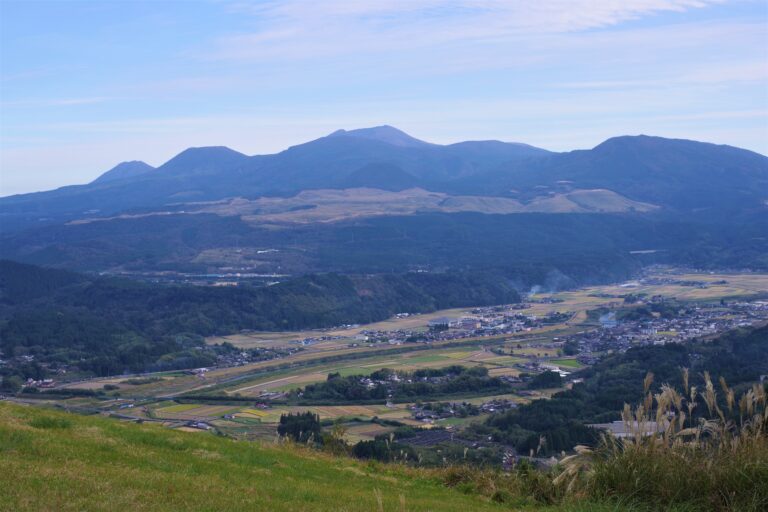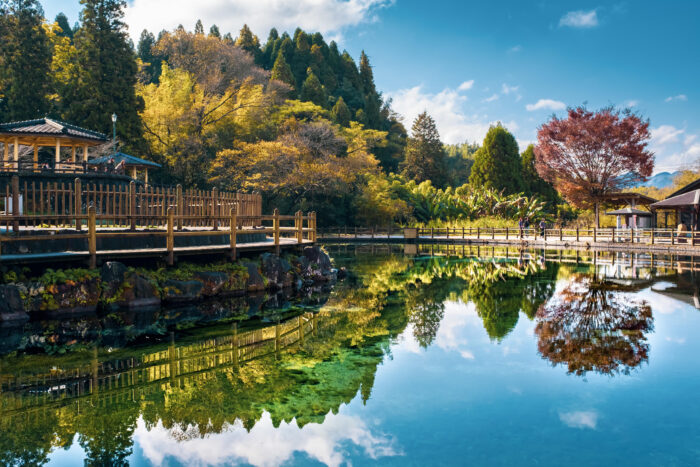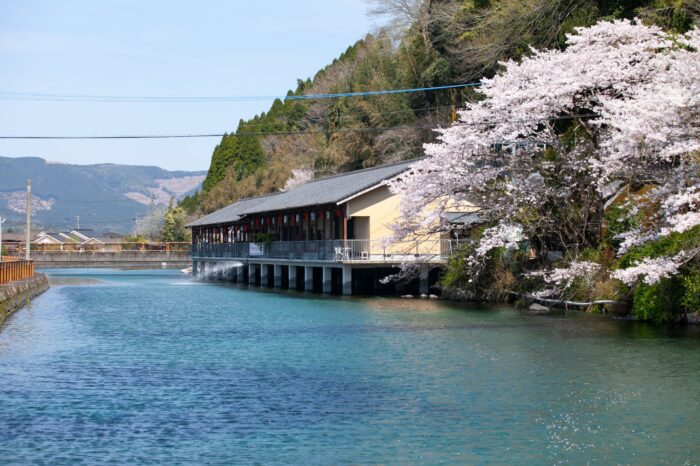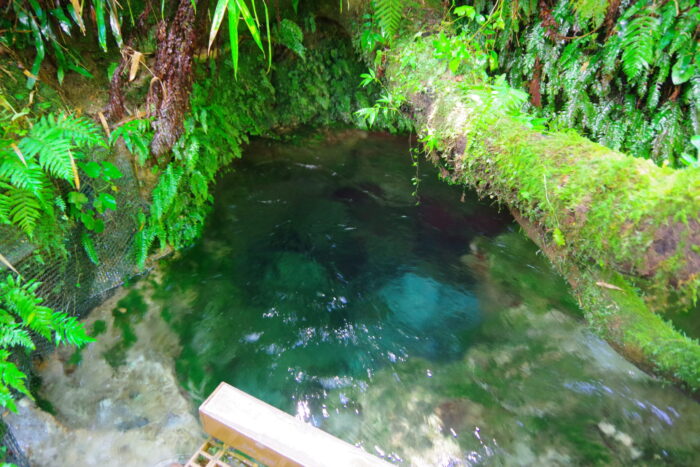Kirishima Geopark is an area centered on the Kirishima Mountains, which is a group of more than 20 active volcanoes lying on top of each other. Other than the Kirishima Mountains, there are also a variety of volcanic landforms to visit in the surrounding area, including multiple calderas and Shirasu plateaus.
Volcanic activities not only create landforms, but also various natural environments and ecosystems, and blessings such as hot springs and spring water.
Volcanoes have also influenced lifestyle and culture at the foot of the mountains. The influence of volcanoes can be seen in the stone culture and belief in volcanoes (shrines, etc.) that remain in various areas, as well as in the food culture of the region, including local specialties such as imo-jochu (sweet potato shochu) and tea.
A place where you can think about “what is a volcano” and experience the way of life and the culture of people who have lived at the foot of an active volcano, that is what Kirishima Geopark.

Caldera
A landform formed during an eruption, when a large amount of magma that had accumulated underground erupted all at once, causing the ground to plunge and sink into the hollowed-out beneath. A caldera eruption is a massive eruption of a magnitude such that once it occurs, it can destroy the surrounding civilization, and such eruptions occur once every few tens of thousands of years in Southern Kyushu.
Shirasu
The accumulation of large pyroclastic flows (a phenomenon in which volcanic ash, pumice, hot gasses, etc. flow in unison) that erupted during caldera eruptions. Shirasu is a folk name in Southern Kyushu and generally refers to the Ito Pyroclastic Flow deposit that erupted from the Aira Caldera about 30,000 years ago. A Shirasu plateau is the landform formed after a pyroclastic flow deposit that filled plains and valleys has been eroded.
Blessings brought by volcanoes and water

View from the Uono Paragliding base.
The town of Yusui-cho spreads out at the foot of the Kirishima Mountains.
The town of Yusui-cho spreads out at the foot of the Kirishima Mountains.
The Kirishima Mountains have an abundance of rainfall, and the rainwater that soaks into the ground surface becomes groundwater. These waters gush out from cliffs and valleys as springs.
The strata around volcanoes are made up of volcanic ash and pumice, which have many crevices that allow water to pass through easily. For this reason, there are many springs around the Kirishima Mountains, which are used for domestic and industrial purposes.
In addition, the underground water gets heated up by the magma beneath Kirishima, and also gushes out as hot springs.
The volcanoes continue to bless the lives of the towns at its foot today.

Maruike Spring
The spring water gushes out from the rain that has fallen around Kurinodake Volcano over a period of nearly 40 years. The surrounding area has been turned into a park, and there is also a free water refill station available to the public. The spring water is also used as water for daily life in the community.

Takenakaike Spring
The spring water that gushes out from the lava beds of Iimori Volcano. During the summer, visitors can enjoy Somen Nagashi (flowing noodles) and swimming pools using this spring water. The spring water is also used for agricultural purposes, and the surrounding irrigation canals have been selected as one of the “100 best canals” as a representative water supply that has supported agriculture in Japan.
-scaled-e1713515545654.jpg)
Hachimandaijigoku Fumarolic Area
Fumarolic area halfway up the Kurinodake Volcano. A promenade is established here and visitors can see the hot springs gushing out. Visitors can also observe how the rocks are weathered by the hot water and turned into clay.

Kurinodake Volcano
A volcano in the Kirishima Mountains that was active in an older period. It has been eroded and no clear form of a volcano remains. At the trailhead sits Japan’s longest staircase made out of repurposed railroad ties, and from the observation deck at the top of the staircase, visitors can see Sakurajima and northwestern region of Kagoshima Prefecture. The photo shows the view from the observation deck at the top of the staircase.

Odemizu Spring
The spring water gushes out from the cracks of rocks (ignimbrite) which are hardened pyroclastic flows deposits that erupted from the Kakuto Caldera about 340,000 years ago. Visitors can observe up close how large amounts of water gush out. Several large and small rock crevices with water gushing out have been identified in the vicinity.